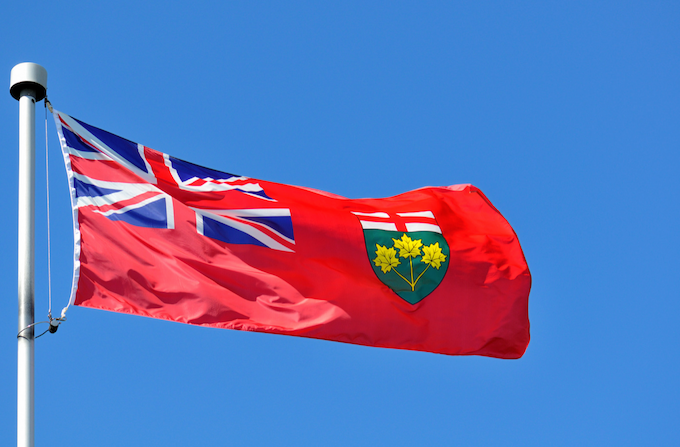The state of publically funded Physical Therapy in Canada - broad overview
“Come to Canada, we have free healthcare!” Canada is known around the world for having a publicly funded healthcare system, one that our country is quite proud of. And while the Canadian healthcare system is dynamic and based around the principles of fairness and equity, there are still many parts of critical and necessary healthcare services that are not publicly funded. So how exactly does this public funding work?
The organization of the Canadian healthcare system is largely determined by the Canadian Constitution in which roles and responsibilities are split up among the federal, provincial and territorial governments. Provincial and territorial governments have most of the responsibility when it comes to delivering health and social services. Each province or territory receives funding to deliver these services through federal, provincial and territorial taxation. One of the roles of the provincial or territorial government healthcare includes delivering services provided by medical doctors and other healthcare professionals such as physical therapists.[6]
Access to physical therapy looks very different across the country. Each province has developed different models to fund physical therapy. Unfortunately, there is a deliberate decision to limit and in some cases completely eliminate publicly funded physical therapy across the entire country. Part 1 of this blog outlines how much physical therapy coverage is available in five provinces following a knee replacement or hip replacement surgery, and the consequences of limited public funding.
Exactly how much physical therapy is publically funded in each province and what is covered after a knee replacement or hip replacement

Image by AWseebaran via Canva. Ontario has a bundled funding model which only covers a select amount of physical therapy sessions after a knee replacement or hip repalcement.
Ontario
Let’s begin with the home of the Canadian Capital, the province of Ontario. Ontario healthcare follows what is called a Bundled Funding Model. In the case of hip replacement and knee replacement surgeries, this means a single payment is made by the provincial government to the bundle holder. The bundle holder who is usually a hospital then establishes partnerships with rehabilitation facilities (such as community based physical therapy clinics) to provide needed follow up care.[11]
Each hospital site conducting the surgery is responsible for providing and paying for all costs associated with the surgery including the rehabilitation after the surgery that a patient needs within their bundled course of care. Within this course of care, the majority of the funding is taken up by the hospital itself to fund the actual hip replacement or knee replacement surgery. This leaves very little funding for rehabilitation following surgery. On average, hospital referrals to physical therapy clinics include 5 physical therapy sessions for total hip replacement up to a fixed cost of $300 per patient and 8 physical therapy sessions for total knee replacement up to a fixed cost of $250.[15] In the city of Toronto an average physical therapy session costs $80-100 per session.[12]
This raises the question, how does public funding that is capped at a maximum of $300 and $250 for a hip replacement and knee replacement respectively, provide enough financial support for the proposed 5-8 physical therapy sessions? To put this in context most rehabilitation literature calls for 6-8 months of physical therapy following these major joint replacement surgeries. The current provincial funding would allow for a total of only 3 publicly funded physical therapy sessions after a total joint replacement.

Image by Atlantic-kid via Canva. The wait times for eastern provinces to see a physical therapist are 140 days in Quebec and 300 days in Newfoundland following a knee replacement or hip replacement.
East Coast
The amount of money provided through the Canada health transfer to the Atlantic provinces is substantially less than other provinces in Canada. To put this in perspective, the combined money transferred to the Atlantic provinces (Newfoundlad, Nova Scotia, New Brunswick, and Prince Edward Island) is $2.51 billion compared to $14.91 billion provided to Ontario.[8] Now, we must take into consideration that the population of Ontario far exceeds that of the east coast, and therefore receives more healthcare funding. However, due to this funding structure the main problem on the east coast are the wait times for publicly funded physical therapy after knee replacement and hip replacement.[1] [2] [13]
Newfoundland
Similar to other provinces the knee replacement or hip replacement and any in-hospital rehabilitation received is covered in Newfoundland. But in Newfoundland even physical therapy received in the community is also covered up to a maximum of $62 per session.[10] There is no limit to the amount of physical therapy you can receive. Now, this obviously looks like a perfect scenario, but access to physical therapy is limited in Newfoundland. A major issue in Newfoundland is the shortage of physical therapists, and therefore this increases the wait times to see a physical therapist and can take up to 30 months![1] This results in people either paying for private physical therapy outside of the publicly funded system or many simply don’t receive or can't afford any physical therapy after surgery.
Quebec
When receiving a hip replacement or knee replacement in Quebec, physical therapy in the public sector is fully funded and you do not receive any limits on the number of appointments. However, much like in Newfoundland, there are long wait times to access publicly funded physical therapy. The average wait time to receive publicly funded physical therapy in a community clinic is 140 days.[3] This means that if a person had a knee replacement today in Quebec they could be waiting 5 months before their first physical therapy appointment. Similar to Newfoundland, if people are able to afford private physical therapy they can choose to pay for it outside of the publicly funded system. Unfortunately, many people receive little to no physical therapy following a knee repalcement or hip repalcement if they are unable to afford private physical therapy.

Image by powerofforever via Canva. In the western provinces, physical therapy sessions following a knee replacement or hip replacement are limited like in British Columbia, or not covered at all like in Manitoba.
West Coast
British Columbia
In 2018, the British Columbia government launched a four part surgical strategy with the intention of reducing wait times for the healthcare their citizens need. One of the first components of this strategy was implementing 5 hip replacement and knee replacement programs throughout the province. Prior to these programs 30% of people who needed a hip replacement and 38% of people who required knee replacements had to wait 26 weeks. By 2019-2020 the province aimes to have a target funding of $100 million dollars to fund more hip and knee surgeries per year. So what does this mean for physical therapy once the surgery has been completed? The British Columbia government’s ministry of health has a publicly funded program called the Medical Services Plan or MSP. This program was made to pay for medical and supplementary health care services on behalf of British Columbia’s residents. Physical therapy is included in these services, however is only partially funded. Those who are eligible for MSP services receive a contribution of $23 per visit for a combined annual limit of 10 visits each calendar year.[7] This means the majority of the cost for each physical therapy session must be covered by the patient since $23 does not cover the cost of a physical therapy session. In addition, people only receive 10 physical therapy sessions which is inadaquate following a knee replacement or hip replacement.
Manitoba
While most of the provinces covered in this blog so far provide some form of funding following total hip replacement and total knee replacement, it is important to highlight that there is very limited access to physical therapy across the country. In the province of Manitoba public funding for physical therapy is available for a certain subset of medical conditions. Physical therapy services are available for those with neurological conditions, spinal cord injury, amputation, dizziness and balance issues. There appears to be no public funding for Manitoba residents who have had a hip replacement or knee replacement.[9] This again reiterates the need for consistent and adequate access to physical therapy services following knee replacement and hip replacement across the country.
It is evident that in Canada, access to physical therapy is different according to the province you live in. But the difficulty to access publicly funded physical therapy is a recurring theme. So, why is this lack of funding an issue?

Image by vitapix via Canva. Lack of funding in the public sector for physical therapy following a knee replacement or hip replacement results in many people paying out of pocket or simply not receiving any rehabilitation following surgery.
Why this lack of funding is an issue
The majority of people receiving a knee replacement or hip replacement in Canada are 65 or older.[5] Within this age range, many people are retired and no longer have private health insurance plans to cover medical expenses, and thus rely on their provincial health care plan. The barriers that exist with access to publicly funded physical therapy pose a real threat to the health of older adults in Canada. In Ontario, after the person has utilized $300 of physical therapy services are they assumed to have achieved a full recovery? In Manitoba, where hip replacement and knee replacement rehabilitation is not covered, where do patients go after surgery? In Quebec and Newfoundland where wait times are 140 and 300 days respectively, are people simply expected to wait? If people can’t afford privately funded physical therapy, how do they access critical rehabilitation following a major joint replacement?

Image by Ryanking999 via Canva. Not having access to physical therapy after knee replacement or hip replacement surgery can have long term health effects and impact quality of life.
The Long term health consequences of not covering post operative Physical Therapy for knee replacement and hip replacement
Physical therapy is considered a standard and essential treatment after knee replacement and hip replacements.[4] If public funding isn't available, and people cannot receive physical therapy after surgery, they will suffer long term health consequences.[14]
After surgery, physical therapists help with the healing process, work to achieve optimal functioning and independence, and minimize potential complications.[4] The consequences of not receiving physical therapy after surgery are:
- Muscle weakness around the joint
- Lack of movement in the joint
- Improper healing of the joint
- Risk of further injury to the joint and other joints
- Chronic pain[16]
The lack of access to publicly funded physical therapy puts individuals receiving a hip replacement and knee replacement at risk for developing future complications directly related to not receiving proper rehabilitation after surgery. These complications can also lead to secondary impacts affecting health such as an overall reduced activity level, inability to complete functional activities, decreased exercise, poor balance, and decreased satisfaction with the surgical procedure.[14]
Conclusion
Although Canada has a publicly funded healthcare system that allows residents access to many publicly funded health services, physical therapy after total hip replacement and knee replacement surgery is not one of them.
In this blog, we focused on 5 provinces in Canada and how they deliver publicly funded physical therapy.
Ontario's bundled care allocates only $300 for hip replacement and $250 for knee replacement physical therapy. British Columbia covers approximately $26 per visit for a maximum of 10 visits per year. In Manitoba there is no public funding for physical therapy services for total knee replacement and hip replacements. While physical therapy is publicly funded in Quebec and Newfoundland and there is no appointment limit, the wait times for these provinces to see a physical therapist are 140 days in Quebec and 300 days in Newfoundland.
The population of people who require a knee replacement or hip replacement are 65 or older. The health related impacts from lack of proper physical therapy is detrimental to the health of older adults. The consequences include chronic pain, muscle weakness, reduced movement in the joint, improper healing and risk of further injury. All of these consequences are completely avoidable with adequate publicly funded physical therapy after knee replacement and hip replacement. Does Canada truly provide “free” healthcare to all of its citizens for essential healthcare services? No!
The Curovate app was developed by a physical therapist to help address the lack of access to physical therapy after a knee replacement or hip replacement surgery. A full rehabilitation program will be provided to you and conveniently accessible through your mobile device. Check out the links below to download the app and see how it can best serve your rehabilitation needs following a hip replacement or knee replacement surgery.
 |
 |
|---|
References
6. Home - Canada.ca. (n.d.). Retrieved October 14, 2021, from https://www.canada.ca/en.html
9. Manitoba Physiotherapy Association. (n.d.). Retrieved October 14, 2021, from https://mbphysio.org









